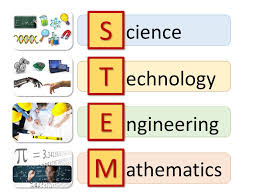STEM Learning and How to Implement It in the Classroom
STEM learning involves implementation of four subjects: Science, Technology, Engineering, and Mathematics as the core basis of teaching. This education technique gains its focus by embracing approaches such as observation, research, innovation and problem-solving. Experts have contended that in this information-based society, students require scientific and technological skills to face challenges that arise with the adjusting economy. The purpose of this article is to define STEM learning and how it can be implemented in classroom curriculum. STEM education is the key to finding solutions to problems that occur as a result of technology and globalization.
History of STEM
In 1957, after the launch of Sputnik, the Russian satellite, Americans became interested in accentuating their scientific background. This urge to become leaders in science and technology led to the establishment of National Aeronautics and Space Administration (NASA) in 1958. In 2001, the acronym STEM was introduced by Peter Faletra. In the 21st century, the rising need to integrate STEM into classrooms has grown so much that experts argue that it should be implemented unto early childhood education.
Understanding STEM
STEM is an acronym for Science, Technology, Engineering, and Math. This mode of learning has been implemented in classrooms from early childhood to the 12th grade. Teachers have attested that STEM fields give students the opportunity to explore and relate to day-to-day hustles and bustles. It is important as it pervades every day's activities. For example, Science is everywhere in the natural surrounding. Technology is applied on a daily basis from the tools and appliances that are used to make work easier. Engineering is in charge of building and transport designs and Math is the backbone of any accounting and numerical concepts.
These disciplines are made engaging and riveting to students across all levels. This is made so to encourage them to undertake careers that are STEM-based. Bill Gates quoted that, "An innovative economy could not be maintained unless well-trained people in maths, science, and technology were made available." STEM careers are growing at a rate of 17% according to the U.S Department of Commerce. The US News/Raytheon STEM index supported this fact, where statistics proved that more than 230000 STEM jobs were available in 2015 and less than 31000 graduates in the filed. Workers in STEM careers earn 26% more than non-STEM workers. This shows that jobs in the future will require basic knowledge of math and science.
Implementing STEM into classroom curriculum
Due to the overall low performance of high school students on STEM courses, there has been an emerging need for repairing the gaps in the education system. Teachers can integrate STEM learning into classroom curriculum by:
- Acquainting students with modern educational technology. Giving them access to computers and cell phones during classes for learning purposes broadens their minds. The internet and various applications are resourceful tools in terms of information.
- Introducing words like 'experiment', 'model' and 'design' to questions. This gives students the opportunity to explore and put their skills into practice. Creativity is employed at its peak ultimately preparing a student for real-life challenges. For example, a teacher can request their students to design a model of a system that will curb global warming.
- Discern real-life problems and require solutions. By empowering students with issues that occur on a daily basis, they will discover that real-world problems have numerous solutions. These activities promote teamwork and effective communication which are important in today's life activities.
- Introduce training programs in STEM classrooms. Structured activities and lessons can be developed to provide hands-on experience to students. Promoting active learning and practicals in classrooms is a way of engaging students. A teacher can also invite experts from outside of school as an incentive to excite students about science, math, and technology.
Teachers who implement STEM learning in their classroom help to shape the future leaders in the country. Encouraging students on the importance of these disciplines and involving them assists them in illustrating their ideas. STEM learning is essential to the overall nation's economy and the increasing competition between other industrialized countries. Students need to be advised on the merits of this type of learning by parents, as it is germane to their future. The potential gap that is set to emerge in the next decade due to the advancement in technology requires a great supply of workers with STEM education.
Author bio: Paul Bates is a writer, speaker, and young entrepreneur living in Fresno, California. He likes to explore new things and then describe it in his writing. He has come up with a list of 50 exploratory essay topics that he personally explored thoroughly.
Search Internet4Classrooms








